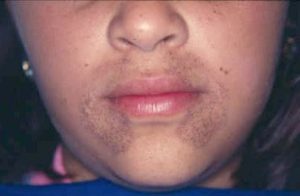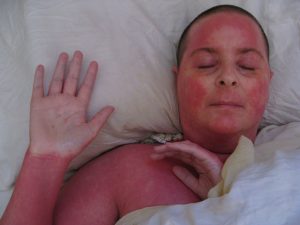The public, gossip columnists, and surgeons are voicing various opinions on the newest plastic surgery trend: buccal fat removal.
Buccal fat is located between the jawbones and cheekbones. Cosmetic surgeons remove the fat to contour the face; the surgery hollows the cheeks and sharpens the jawline.

Before (left) and after (right) buccal fat removal. The patient’s cheekbones and jawline are more prominent. (Source: primera1035 on Flickr)
Patients typically have fuller cheeks that negatively impact their self-esteem. A doctor can remove this insecurity in an hour, and a patient recovers in only 7 to 10 days. The surgeon removes the fat with an incision in the inner cheek, so no scar is externally visible.
In 2021, Chrissy Teigen, a well-known model, expressed improved self-confidence after her own surgery.
Some popular procedures, like Botox, require routine touch-ups and payments to the surgeon’s office. In contrast, buccal fat removal is a one-time, permanent change. Supporters see its irreversibility as a positive, but others see it as a significant negative to the procedure.
Think about any older person in your life. As seen daily and shown through scientific studies, the middle of the face naturally loses fat as people age. Buccal fat removal speeds up this aging process. As said by Dr. Sherrell Aston, “you can make a 25-year-old look 45 with a 15-minute procedure”. Again, the process is irreversible, so surgeons cannot plump the cheeks back up with fillers or fat transfers.
Further, as with any surgery, there are associated risks. A study showed that there is a 26.3% chance of injury to facial nerves. Damage to the buccal branch can result in metallic-tasting food and numbness in the face or neck.
Buccal fat surgery can immediately boost a patient’s self-confidence, but the long-term effects must be considered. In the end, it is the individual’s decision, with consultation from a cosmetic surgeon, to alter their face forever.
– Julia Sawitsky


